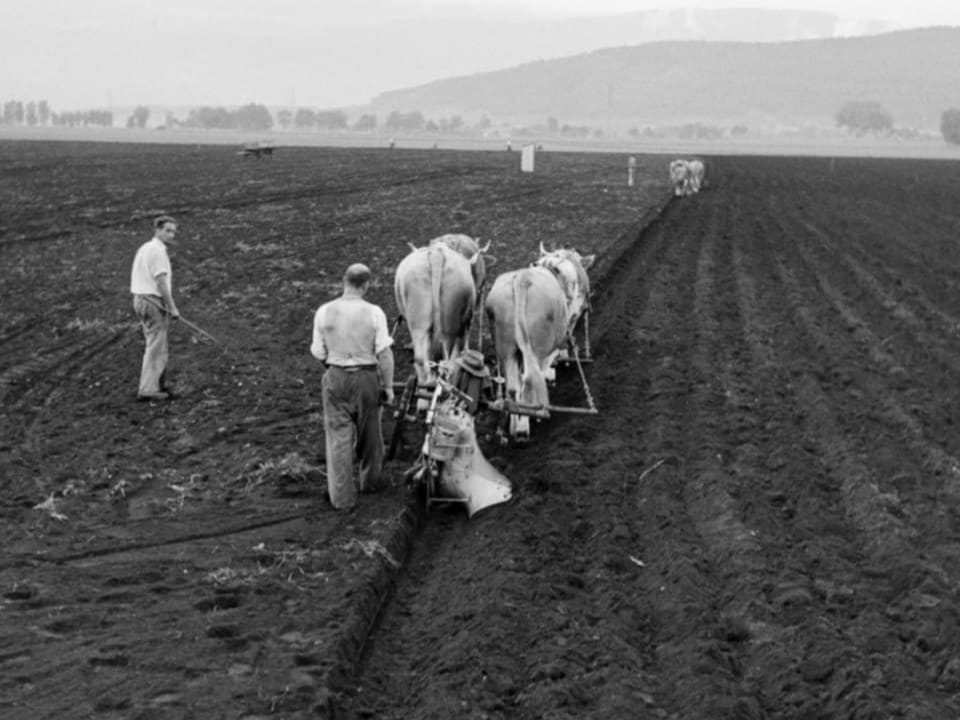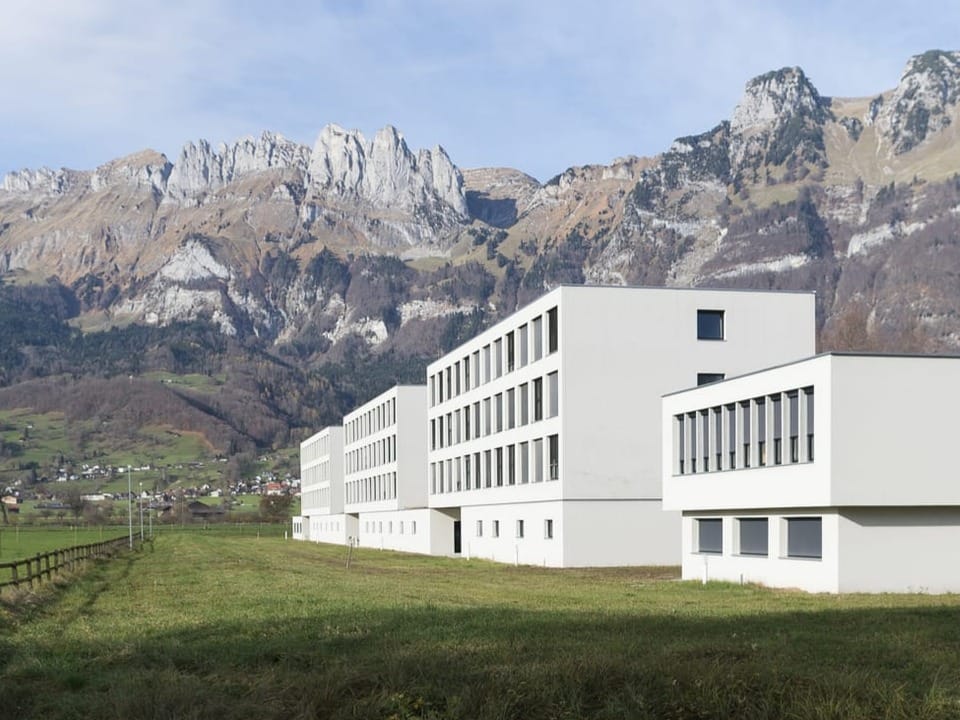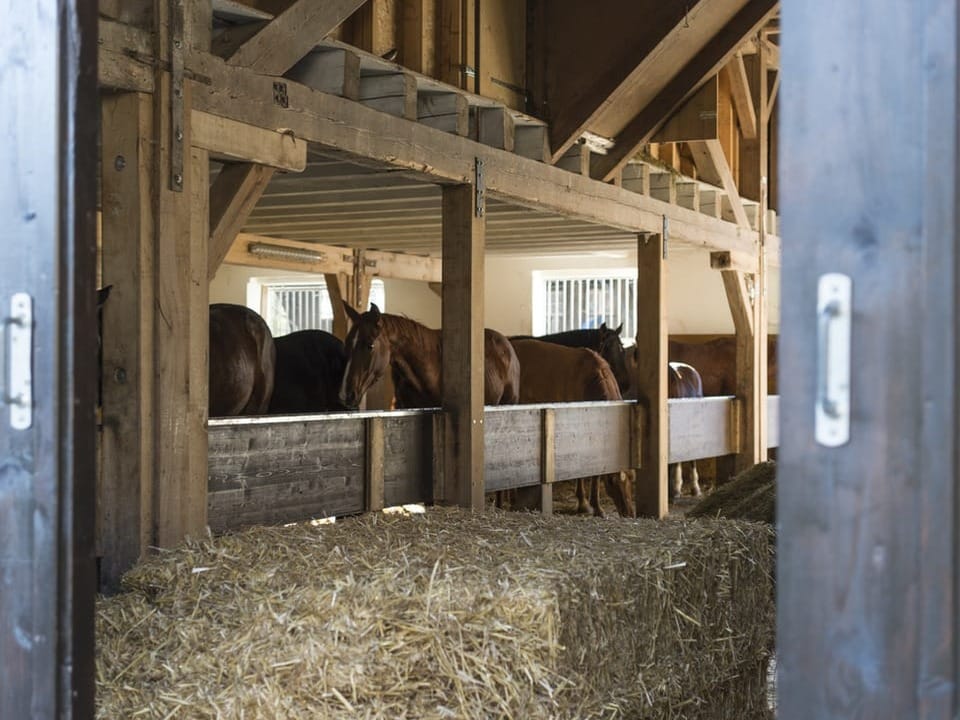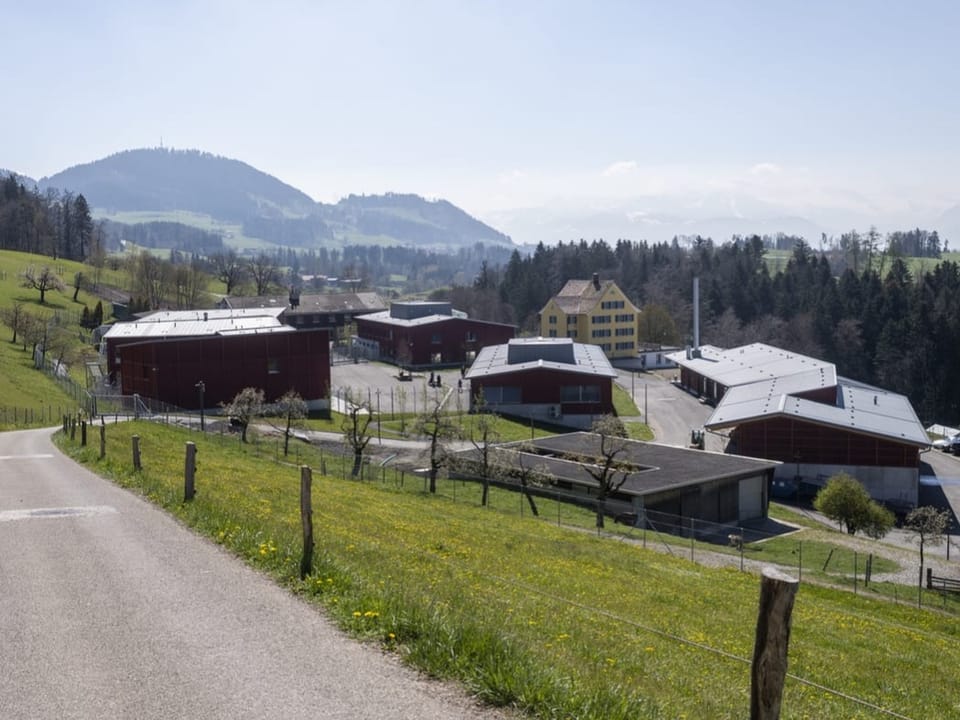While milking, mucking out and harvesting, prisoners learn for life – after their time behind bars.
The Witzwil correctional facility is located in the middle of the Grosses Moos in the Bernese Seeland, in the vegetable garden of Switzerland. But the correctional facility is not only a penal institution, but also an agricultural operation – with around 730 hectares of land, it is the largest in Switzerland.
Today, the Witzwil prison employs around 60 to 80 prisoners in agriculture. They milk cows, help in the potato fields or raise foals. There are also other tasks that are indirectly related to agriculture, such as processing fruit and vegetables.
These Swiss prisons rely on agriculture
“Working with animals is particularly important because it guarantees a consistent workload throughout the year,” says Balz Bütikofer, the director of Witzwil Prison. Agriculture is therefore the core of meaningful and meaningful work, and it should remain that way in the future. But with significantly less land – that’s what the canton has decided.
However, the prison will be able to offer enough jobs in agriculture in the future, says Balz Bütikofer.
Agriculture has long served as a means of self-sufficiency
The history of agriculture in the Witzwil prison goes back a long way. In 1894, the first barracks for prisoners were built in Witzwil – and since then the land around Witzwil has been farmed. The canton of Bern expected the first director of the Bern prison, Otto Kellerhals, to finance the institution from the proceeds of agriculture. Agriculture largely served to provide for the company’s self-sufficiency – and to keep the prisoners employed.

Legend:
Men from the “Eschenhof drinking sanatorium” on the site of today’s Witzwil Prison (BE) work in the field. The photo dates from 1949. Today, Witzwil Prison is the largest farm in Switzerland, with an area of 728 hectares.
Keystone/Photopress Archive
“Meaningful employment still plays a central role today,” says Kurt Pfeuti. He is responsible for building grants for prisons and correctional facilities at the Federal Office of Justice.
This is because there is a work obligation in the Swiss penal system. “This means that penal institutions must provide prisoners with jobs that match their abilities.” Many penal institutions throughout Switzerland therefore continue to rely on agricultural businesses, as these offer a variety of jobs with different requirements.
«Handwork» instead of modern machines
In contrast to the past, the focus is no longer just on the farm’s high production, but on preparing the prisoners for the future. Some prisons have therefore decided not to modernize their farms as much as is the case in private farms.
There is no point in showing prisoners how a milking robot works.
Because: “Many people in Swiss prisons come from abroad and are deported after serving their sentence,” says Pfeuti from the Federal Office of Justice. It is therefore a matter of teaching them the basics of agriculture here, which they can also use at home. For example, it is of no use to show them how a milking robot works here. That is why agriculture in the penal system places a strong focus on “manual work”.






